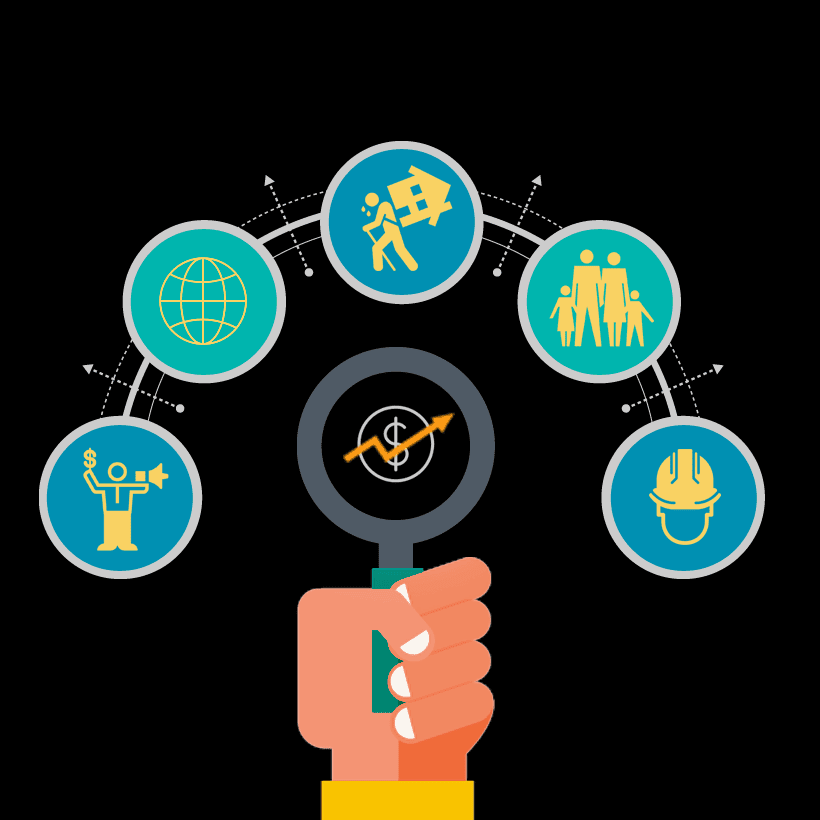A system is a set of interrelated and interdependent parts arranged in a way that behaves as a whole. The management of human resources in an organization can be viewed as a system. The human resource management system consists of input, process and output components. Such components interact with environmental factors. Therefore, it is an open system. This system provides a conceptual structure for integrating the various components within the human resource system. Human resource management system links human resources with the larger organizational system. As a system it consists of input-process-output relationship which can be shown in the following diagram:
1. Input components
Input components are those elements, which are used as primary resources for organizational output. Input factors consists of the following:- Human resource: Human resources are the active means of production. They can be mobilized from one job to another. When we speak about human resources, we mean -the energies and competencies of the people capable of performing the assigned
task.
- Non-human resources: Non-human resources includes other resources than human resource or manpower. Other resources are associative resources which assist for achieving the target. These resources are machines, money, management, method,
market and information.
2. Processing components
Processing components include all the activities, which are performed to achieve the desired level of output. Processing components consists of the following:- Acquisition: Acquisition function is concerned with recruitment and selection of manpower requirement for a company. It ensures that the company has the right number of people at the right place, and at the right time who are capable to complete the work required. It is the starting point of the human resource management function. The acquisition is primarily concerned with planning, recruitment, selection, and socialization of employees. It selects and socializes the competent employees who have adopted the organization's culture.
- Development : Development phase begins after the socialization of newly appointed employees in an organization. It is concerned with imparting knowledge and skills to perform the task property. Moreover, it is an attempt to improve employee's performance by imparting knowledge, changing attitudes and improving skills, which can be done through teaching, coaching, classroom courses, assignments, professional programs and so forth. The ultimate goal of employee development is of course to enhance the future performance of the organization by the efficient employees. The development of employees is not only for newly appointed employees, but it can also be applied for existing employees to develop them according to change in the internal and external environment.
- Motivation : Only training and development do not inspire employees to do better work. For this, they should be motivated which induces and inspires them to perform well in actual work floor. Motivation includes job specification, performance evaluation, reward and punishment, work performance, compensation management, discipline and so on. It is important for better work performance because high performance depends on both ability and motivation.
- Maintenance: It is last but not the least component of human resource management. It is concerned with the process of retaining the employees in the organization. This contributes towards keeping those employees who can do extremely better
for the organization. It creates a friendly and harmonious environment for those who are high performers, and make them remain in the same organization for a longer period of time. The organization should provide additional facilities, safe working conditions, friendly work environment, and satisfactory labor relations for this. If these activities are performed in the right manner, we can expect to have capable and competent employees in the organization. These employees are
committed to the organizational objective and are satisfied with their jobs.
3. Output components
Output is the final product or service, which is produced through managerial function by using human and non-human resources as input. The output components of HRM system are presented as follows:- Quality of work life: It refers to the efficient relationship between employees and the total working environment of the organization. In other words, the quality of work life is the extent to which members of an organization are able
to satisfy personal needs through the organizational process. It makes employees participate in the organizational process actively and efficiently.
- Productivity: Productivity is the amount of work that is being produced in the organization in terms of how much and how well. Hence, productivity is concerned with an efficient relationship between organizational input and output. Higher
productivity ensures the lesser cost of production and vice versa.
- Readiness for change: Organizations need change in order to adjust with changing environment. Everyone has to be prepared for any sort of changes that would occur in the work life.
- Employee satisfaction and commitment: It is another output of the HRM system which is concerned with employee's attitude towards the job and his/her desire of commitment. If the employee is satisfied with the pay and other benefits provided with, he/she shows additional commitment towards organizational performance.
Also Read:
Human Resource Management System





